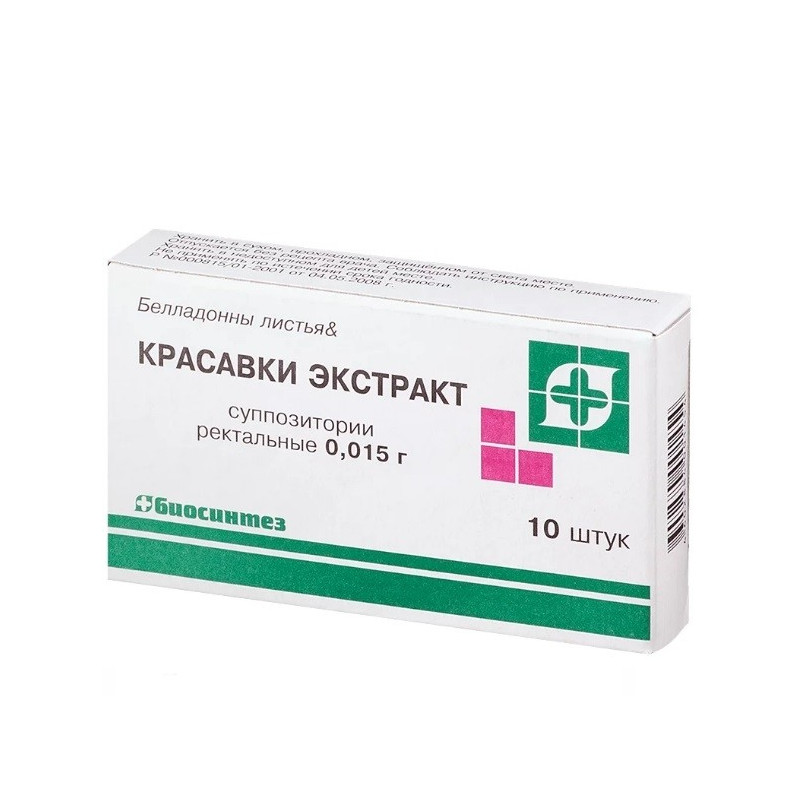



 All payments are encrypted via SSL
All payments are encrypted via SSL
 Full Refund if you haven't received your order
Full Refund if you haven't received your order
| pharmachologic effect Means of plant origin. It has an M-anticholinergic and antispasmodic effect. Interferes with the stimulatory effect of acetylcholine; reduces the secretion of salivary, gastric, bronchial, lacrimal, sweat glands, pancreas. Reduces the tone of the digestive tract muscles, bile ducts and gallbladder; causes tachycardia, improves AV conductivity. Expands pupils, impedes the outflow of intraocular fluid, increases intraocular pressure, causes accommodation paralysis. Indications and usagePeptic ulcer and duodenal ulcer, cholelithiasis, smooth muscle spasm of the abdominal organs, hepatic colic, renal colic; bradycardia, AV block; hemorrhoids, anus fissures. ContraindicationsHypersensitivity, angle-closure glaucoma, prostate adenoma. Rectal, by candle (15 mg) 2-3 times a day; The maximum dose is 10 candles per day. Adverse reactionsDry mouth, mydriasis, intestinal atony, dizziness, tachycardia, urinary retention, eyelid hyperemia, photophobia. Overdose. Symptoms: psychomotor agitation, accommodation paralysis, acute urinary retention. Special notesIt is necessary to refrain from potentially hazardous activities requiring increased attention. |
